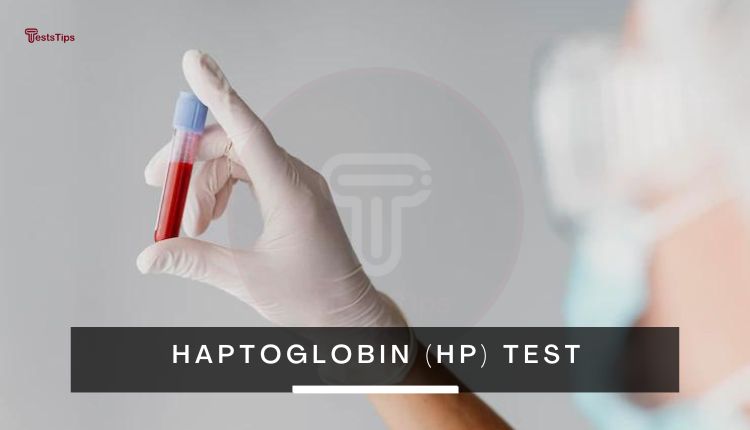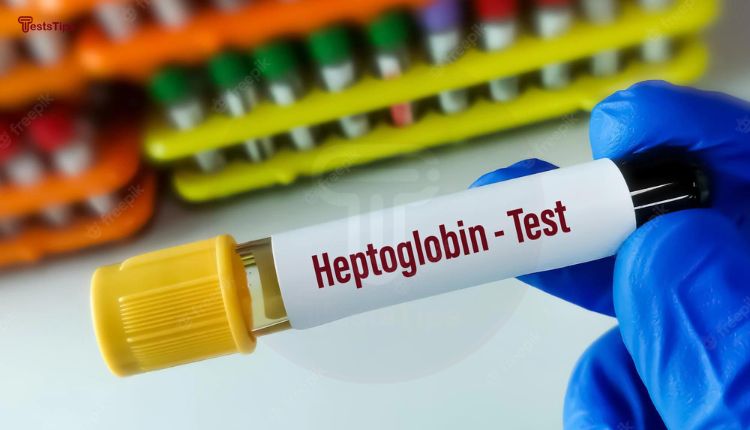Haptoglobin test. Purpose and results of the test
Haptoglobin (HP) Test
Haptoglobin testing is used mainly to help diagnose and monitor hemolytic anemia. read more about the HP test, and its results interpretations.

Table of Contents
Haptoglobin test measures the amount of haptoglobin in the blood. Haptoglobin is a protein produced by the liver. Its function is to locate and binds to free haemoglobin in the blood. It is mostly used to detect and assess hemolytic anemia.
What is Haptoglobin?
A haptoglobin test is a medical procedure used to diagnose hemolytic anemia. Hemolytic anemia is a type of anemia caused by red blood cells being destroyed faster than they can be replaced, It is part of alpha-2 on serum protein electrophoresis, and it consists of a glycoprotein.
The haptoglobin blood test measures the level of haptoglobin in your blood, haptoglobin is primarily produced by the liver which attaches to a certain type of hemoglobin in the blood.
This test can help detect and evaluate hemolytic anaemia, which occurs when large numbers of red blood cells (RBCs) are destroyed. It is also used to distinguish anemia due to other causes from hemolytic anemia.
It can also help monitor intravascular hemolysis, a condition in which free hemoglobin (hb) is present in the blood.
Serum haptoglobin test is typically ordered when a person has symptoms of anemia and is often ordered along with other lab tests such as complete blood count, reticulocyte count, and peripheral smear examination.
Who Should Have a Haptoglobin Test (HP)?
A haptoglobin test is a common way to diagnose haemolytic anemia, a disorder that occurs when red blood cells are broken down faster than they can be replaced.
By testing your plasma haptoglobin levels, your doctor can determine if you have hemolytic anemia or another type of anemia. It can also help diagnose other conditions such as megaloblastic anemias and other hemolytic states.
A haptoglobin test is typically ordered when someone has signs and symptoms of anaemia such as:
- Fatigue
- Pale skin
- Shortness of breath
- Rapid heart rate
- Jaundice.
You may also need this test if you’ve had a blood transfusion. A haptoglobin test may be done along with another test called direct antiglobulin.
HP test is often ordered in conjunction with other laboratory tests to help make an accurate diagnosis.
Preparations for A Haptoglobin Test

This simple blood test does not require any special preparation or fasting.
During the test a small needle will be used by a health care professional to draw blood specimen from a vein in your arm. A small amount of blood will be collected in a test tube or vial after the needle is inserted. You may feel a slight sting when the needle goes in or out. This usually takes under five minutes.
Are There Risks Involved in Having a HP Test?
Having a blood test poses very little risk. You may experience minor pain or bruising where the needle was inserted, but most symptoms will subside quickly.
Result interpretation
The haptoglobin test is used to measure the amount of a protein called haptoglobin in your blood. Haptoglobin is a serum glycoprotein, made by your liver and its purpose is to help bind and remove free hemoglobin from circulation.
A normal result for this test falls between 30 mg/dL and 200 mg/dL. Abnormal haptoglobin levels may be an indication of hemolytic anemia, hypersplenism, megaloblastic anemia, or the use of certain drugs such as corticosteroids or androgens.
If your results showed decreased haptoglobin level, it may mean you have one of the following conditions:
- Hemolytic anemia
- Liver disease
- Reaction to a transfusion
Other blood tests may be ordered by your healthcare provider to aid in the diagnosis. These are some examples:
- Hemoglobin Test
- Bilirubin test
- Complete Blood Count
- Blood Smear
- Reticulocyte Count
- Hematocrit Test
- Lactate Dehydrogenase Test
If hemolysis ceases, it is expected that haptoglobin levels will return to normal within a week. The haptoglobin test can be used to differentiate between primary and secondary hemolytic anemia when used with a cut-off level of 0.2 g/L.
Related tests
- Lactate Dehydrogenase (LDH) Test
- Red Blood Cell (RBC) Indices
- Complete Blood Count (CBC)
- Reticulocyte Count
- Hemoglobin Test
- Hematocrit Test
- Blood Smear
- combo test
High haptoglobin levels could indicate an inflammatory disease. Inflammatory diseases are immune system disorders that can lead to serious health problems. However, haptoglobin testing is rarely used to diagnose or monitor conditions associated with high haptoglobin levels.
